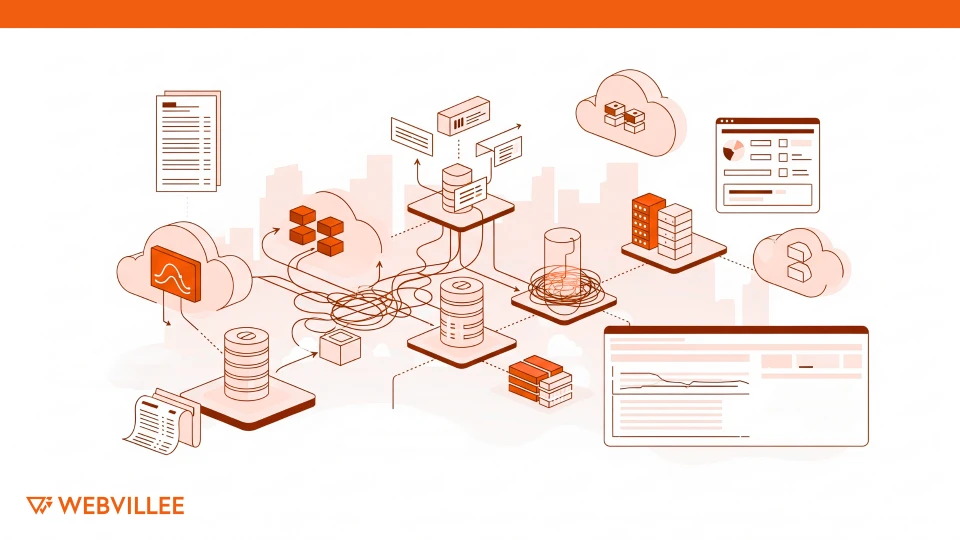In 2025, more enterprises are turning to multi-cloud environments to combine the strengths of different providers. While the benefits are significant, multi-cloud planning mistakes can quickly erode those gains. Effective multi-cloud planning and a clear multi-cloud strategy are essential to ensure systems work together without costly disruptions.
The rise of multi-cloud adoption trends 2025 is driven by the need for:
- Greater flexibility in choosing services
- Built-in redundancy to avoid single points of failure
- Better cost control by leveraging competitive pricing
However, without proper planning, multi-cloud setups can lead to operational inefficiencies, spiraling costs, and heightened security risks. This blog outlines 6 multi-cloud planning mistakes that enterprises must avoid to protect their investments and keep operations running smoothly.
Mistake 1: Ignoring Workload Placement Strategy
One of the biggest pitfalls in multi-cloud adoption is skipping a well-defined workload placement strategy. Where workloads are hosted directly impacts performance, operating costs, and compliance readiness.
Random or ad-hoc placement across providers can lead to:
- Increased latency due to geographical mismatches
- Higher costs from inefficient resource allocation
- Compliance issues if sensitive data is stored in the wrong region
A strategic approach begins with assessing each workload’s performance requirements, security needs, and compliance obligations. This is where cloud workload optimization becomes essential, ensuring each application or dataset resides in the most suitable cloud environment.
Using architecture mapping and performance modeling tools can help businesses choose the right placement from the start. At Webvillee, our Product Engineering expertise supports clients in creating architectures that balance speed, cost efficiency, and compliance for every workload.

Mistake 2: Overlooking Interoperability and Integration
Multi-cloud setups can quickly become complex if applications, data pipelines, and APIs do not communicate seamlessly. Cloud interoperability issues often arise when enterprises rely heavily on vendor-specific services, which can create cloud integration challenges later on.
Problems that stem from poor interoperability include:
- Data silos that prevent unified analytics
- Higher development costs for custom connectors
- Reduced agility when switching vendors
To address these, businesses should prioritize open standards, cross-platform tools, and thorough integration testing before deployment. For instance, platforms like Microsoft Dynamics 365 and Salesforce Services can be integrated effectively across multiple clouds, but only with careful planning and standardized APIs.
Enterprises that build with interoperability in mind from day one reduce migration headaches, enhance data flow, and future-proof their multi-cloud investments.
Mistake 3: Underestimating Security and Compliance Needs
Multi-cloud setups expand an organization’s digital footprint, which naturally increases its attack surface. Neglecting multi-cloud security can leave critical systems and data exposed.
The challenges do not stop at cyber threats. Industry-specific regulations like HIPAA, GDPR, and PCI-DSS demand strict data handling practices, and managing compliance in multi-cloud environments requires even greater attention.
Key security oversights include:
- Inconsistent security policies across providers
- Gaps in identity and access management
- Limited visibility into cross-cloud threats
The solution lies in creating unified security policies, centralizing monitoring, and adopting tools that provide real-time threat detection across all cloud environments. Regular compliance audits and automated policy enforcement can help ensure that security is not just an afterthought but an integral part of the multi-cloud strategy.
Mistake 4: Poor Cost Visibility and Budget Control
Managing costs in a multi-cloud setup can quickly become challenging. Each provider has its own billing model, making it difficult to see the full picture. Without proper oversight, enterprises often face over-provisioning and unused resources that quietly drain budgets.
Poor cost control can lead to:
- Paying for idle storage or underutilized compute power
- Oversized instances running unnecessarily
- Difficulty predicting monthly expenses
Implementing cloud cost management tools allows businesses to consolidate billing data, track usage in real time, and spot inefficiencies early. Clear budgeting frameworks combined with multi-cloud cost governance policies ensure that spending is controlled and predictable.
Regular cost audits, tagging resources for accountability, and automating shutdown of unused instances can significantly lower expenses without affecting performance.

Mistake 5: Neglecting Disaster Recovery and Data Backup Plans
Many organizations assume that using multiple cloud providers automatically means redundancy, but this is far from true. Without a defined cloud disaster recovery plan, even a small outage can disrupt business operations.
A strong cross-cloud backup strategy ensures that critical data and workloads can be restored quickly, regardless of where they are hosted. This requires:
- Regular backup scheduling across different providers
- Testing recovery processes to confirm they work under pressure
- Replicating mission-critical workloads to geographically separate regions
Downtime is costly, both in lost revenue and damaged reputation. Companies that plan, test, and refine their recovery protocols are far better positioned to keep operations running smoothly when unexpected incidents occur.
Mistake 6: Lack of Skilled Multi-Cloud Management Teams
Multi-cloud environments require professionals who understand not only cloud architecture but also orchestration, cost management, and compliance requirements. A shortage of skilled staff can slow deployments, create security gaps, and increase operational costs.
Skill gaps often result in:
- Misconfigured workloads leading to performance issues
- Over-reliance on manual processes that increase errors
- Missed opportunities for optimization
Organizations can address this by investing in in-house training programs or partnering with experienced service providers. For example, complex cloud integrations that require backend customization, such as those involving Java Development, benefit from experts who can tailor solutions for performance and scalability.
How Webvillee Helps Enterprises Avoid These Mistakes
At Webvillee, we help enterprises navigate the complexity of multi-cloud environments with confidence. Our team specializes in multi-cloud strategy, secure integration, and compliance management, ensuring your systems are both efficient and resilient.
We focus on:
- Intelligent workload optimization for performance and cost savings
- Robust cost governance frameworks to maintain financial control
- End-to-end compliance and security oversight for regulated industries
With proven experience across diverse platforms, we help clients plan, execute, and manage multi-cloud environments without falling into the costly pitfalls discussed above. If you are ready to strengthen your cloud strategy, get in touch with Webvillee today.

